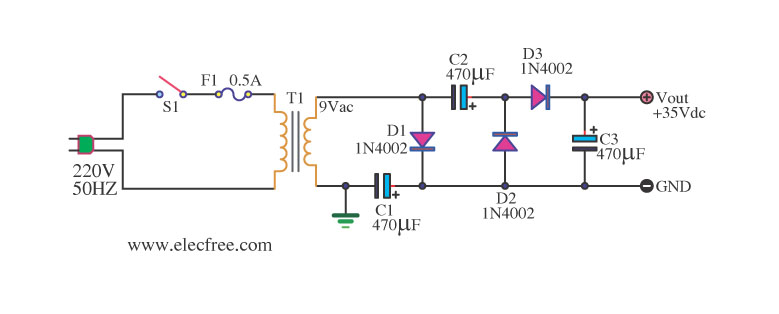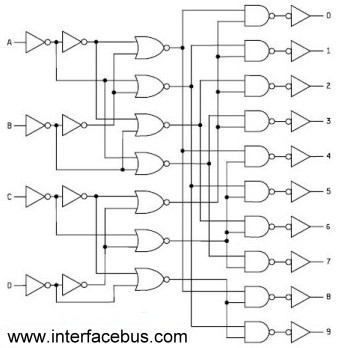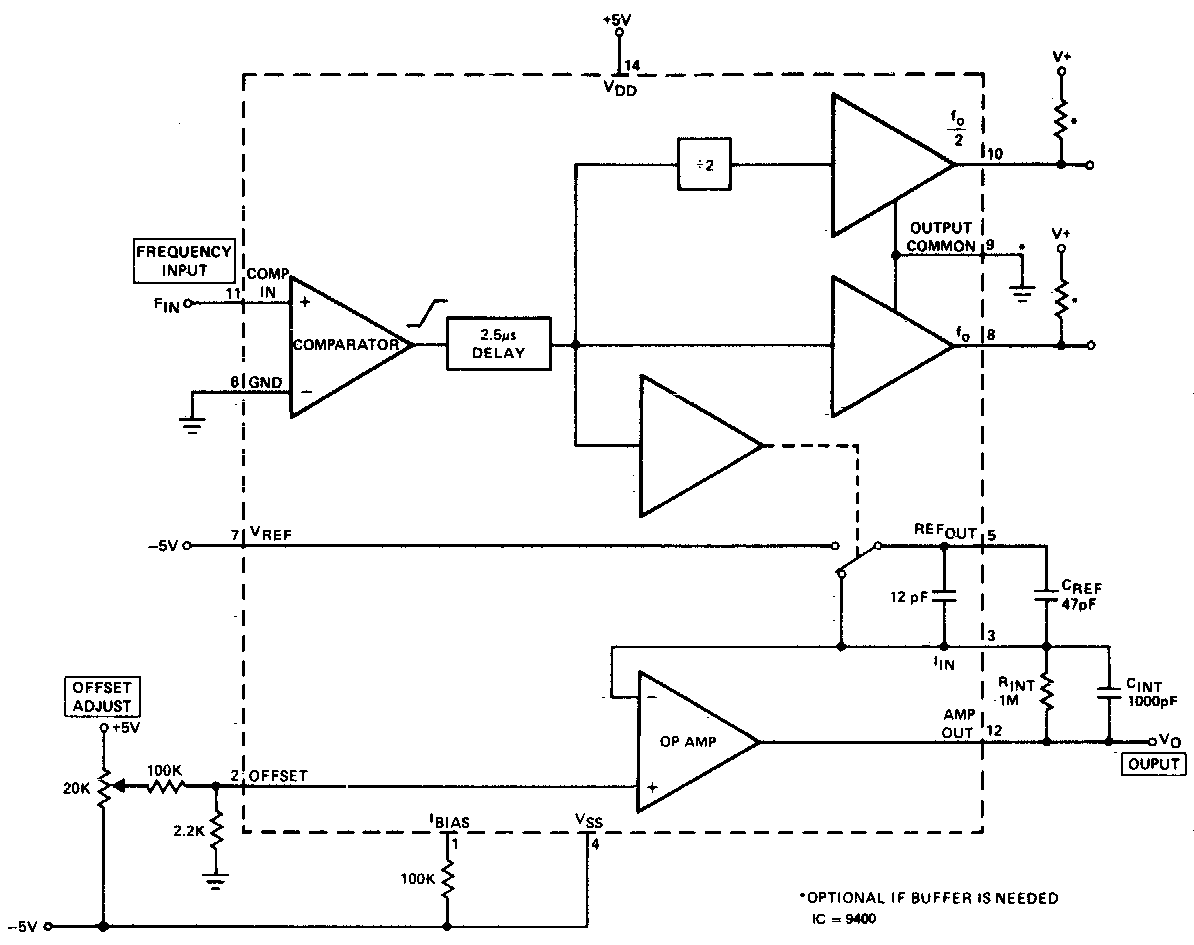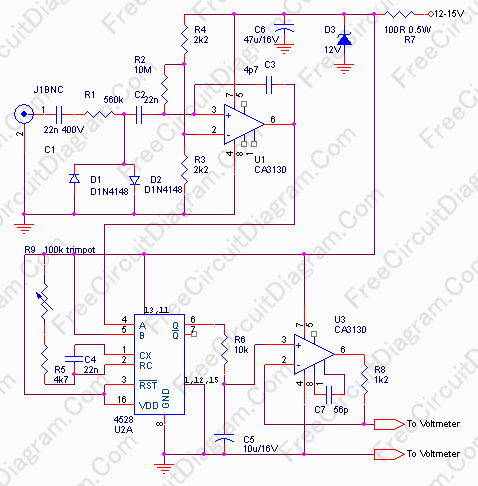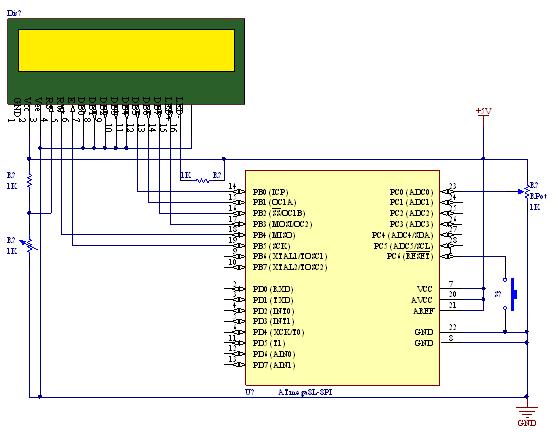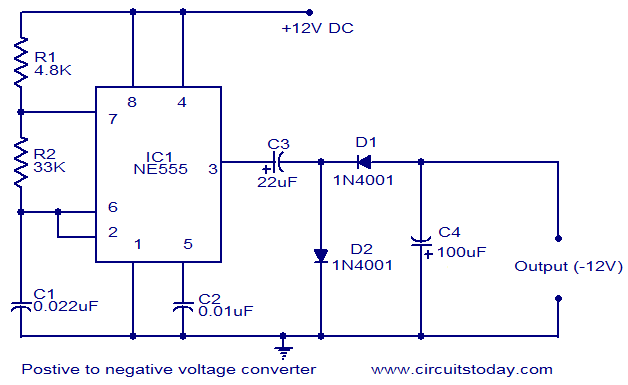
Photodiode current-to-voltage converter
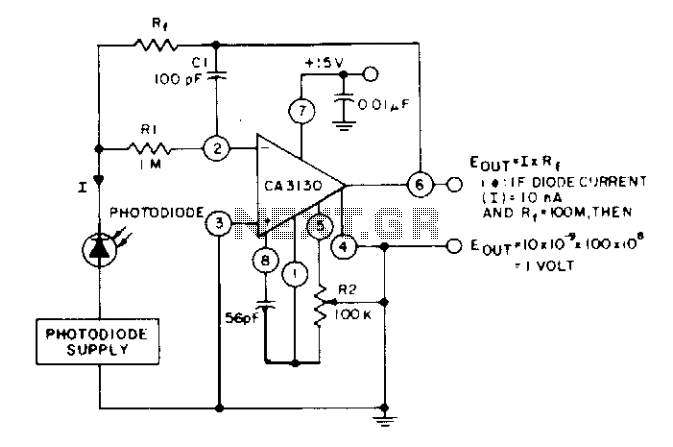
The circuit utilizes three CA3130 BiMOS operational amplifiers in an application that is sensitive to sub-picoampere input currents. It provides a ground-referenced output voltage that is proportional to the input current flowing through the photodiode.
The circuit design employs three CA3130 BiMOS operational amplifiers, which are known for their low input bias currents and high input impedance, making them suitable for applications that require the detection of very small input currents, such as those in the sub-picoampere range. This sensitivity is critical in scenarios where precise measurements are necessary, such as in photodetection applications.
The configuration of the op-amps in this circuit is likely to be set up in a transimpedance amplifier configuration, where the photodiode converts incident light into a current. The output of the circuit is a voltage that is directly proportional to this input current. This output is ground-referenced, ensuring that the voltage level can be easily interfaced with other components in the system without the need for additional level shifting.
In practical implementation, the CA3130 op-amps can be arranged in a feedback loop to minimize noise and enhance the linearity of the output signal. The choice of resistors in the feedback path will determine the gain of the circuit, allowing for appropriate scaling of the output voltage based on the expected range of input currents from the photodiode.
Additional considerations in the design may include the selection of bypass capacitors to stabilize the power supply rails and the use of proper layout techniques to minimize parasitic capacitance and inductance, which could affect performance at such low current levels. The overall design must ensure that the thermal and noise characteristics of the components do not interfere with the precision of the measurements being taken.The circuit uses three CA3130 BiMOS op amps in an application sensitive to sub-picoampere input currents. The circuit provides a ground-referenced output voltage proportional to input current flowing through the photo-diode.
The circuit design employs three CA3130 BiMOS operational amplifiers, which are known for their low input bias currents and high input impedance, making them suitable for applications that require the detection of very small input currents, such as those in the sub-picoampere range. This sensitivity is critical in scenarios where precise measurements are necessary, such as in photodetection applications.
The configuration of the op-amps in this circuit is likely to be set up in a transimpedance amplifier configuration, where the photodiode converts incident light into a current. The output of the circuit is a voltage that is directly proportional to this input current. This output is ground-referenced, ensuring that the voltage level can be easily interfaced with other components in the system without the need for additional level shifting.
In practical implementation, the CA3130 op-amps can be arranged in a feedback loop to minimize noise and enhance the linearity of the output signal. The choice of resistors in the feedback path will determine the gain of the circuit, allowing for appropriate scaling of the output voltage based on the expected range of input currents from the photodiode.
Additional considerations in the design may include the selection of bypass capacitors to stabilize the power supply rails and the use of proper layout techniques to minimize parasitic capacitance and inductance, which could affect performance at such low current levels. The overall design must ensure that the thermal and noise characteristics of the components do not interfere with the precision of the measurements being taken.The circuit uses three CA3130 BiMOS op amps in an application sensitive to sub-picoampere input currents. The circuit provides a ground-referenced output voltage proportional to input current flowing through the photo-diode.
